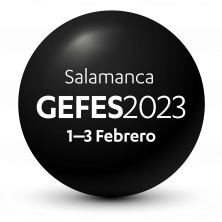
Irene Calvo-Almazán is a scientist at the “Synchrotron Radiation and Materials Science Studies” (RASMIA) at the Institute of Nanoscience and Materials Science of Aragon (INMA)/ University of Zaragoza. Her research focuses on the design and application of new approaches of coherent x-ray methods for the study of time-evolving nanostructured systems such as magnetic domains diffusing within a nanostructured thin film, or the crystallization and dissolution taking place on crystalline interfaces under reactive conditions.
Before, she performed her PhD at the Institut Laue-Langevin (ILL, France)/Universidad de Zaragoza (Spain) where she specialized in the use of neutron scattering to study molecular diffusion on graphitic surfaces. Afterwards, during her post-doctoral appointment in the Surface Science group at the Cavendish Laboratory
(University of Cambridge, UK) she used helium-atom scattering to probe the dynamics of complex organic molecules adsorbed on metallic substrates. Finally, her motivation to explore the structure and dynamics at more complex interfaces (e.g. the 3D irregular interfaces of nano-crystal) lead her to a post-doctoral position at the Synchrotron Radiation Studies group in Argonne National Lab (USA), where she eventually obtained a tenure track position as Assistant Physicist.
Currently she benefits from a Maria Zambrano fellowship to bring back to the INMA her expertise in new coherent x-ray methods for Materials Sciences, which exploit the highly coherent beam of new generation
synchrotrons.
Title: Synchrotron X-ray Coherence to Probe the Complexity of realistic interfaces at the Nanoscale
Abstract: The advent of the world’s first coherent hard X-ray sources in France (ESRF) and the USA (APS) represents an unprecedented opportunity to conduct operando (i.e., in situ and time-dependent) studies on the structure and behavior of surfaces, interfaces, and single crystalline grains in reactive environments. In this talk, I will give an overview of the new approaches utilizing x-ray coherent scattering to observe the structure of crystalline matter in three dimensions and with special sensitivity to nanoscopic defects, lattice distortions, irregular morphologies and their evolution under experimental conditions mimicking natural environments. As an example, I will describe our recent studies about growth and dissolution at mineral-water interfaces with coherent x-rays. In the first study coherent X-ray reflectivity was used to reveal the morphology and the active sites for growth and dissolution of a an otavite (CdCO3 ) thin film grown on a dolomite substrate [1]. The second study shows a novel approach to extract structural information from a coherent diffraction pattern based on the re-interpretation of the Patterson Function as an auto-hologram and a mathematical graph [2]. These two studies form the initial basis of a research program aiming to develop advanced coherent x-ray imaging methodologies to characterize the dynamic and chemical behavior of crystalline grains at the nanoscale and under realistic environments (e.g. mineral matrices, multilayered compounds, liquid solutions, etc.).
Keywords: coherent x-rays, in situ, mineral-water interface reactivity
References:
1. I. Calvo-Almazán, et al. Imaging otavite thin films on calcite with coherent x-ray reflectivity In preparation
2. I. Calvo-Almazán, et al. The Patterson Function as Auto-Hologram and Graph Enables the Direct Solution to the Phase Problem for Coherently Illuminated Atomistic Structures, Accepted in New Journal of Physics.
